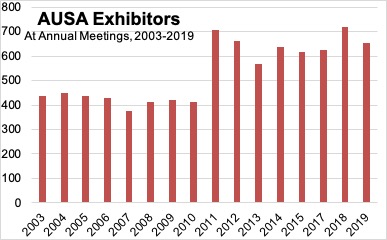7 octobre 2020 | International, C4ISR
DIA awards nearly $800 million in work to major defense primes
Andrew Eversden WASHINGTON — The U.S. Defense Intelligence Agency awarded nearly $800 million in contacts to two major defense contractors to improve data storage and network modernization. The DIA, a military intelligence agency, chose Northrop Grumman to deliver its Transforming All-Source Analysis with Location-Based Object Services (TALOS) program, which focuses on building new big data systems. The contract is worth $690 million. A spokesperson for Northrop Grumman declined to provide the performance period. The platform will include the DIA's Machine-Assisted Rapid-Repository System (MARS), according to a Sept. 30 press release from the defense giant. MARS is a massive new DIA database that manages foreign military infrastructure data that is critical for operations planning and targeting. “Transforming current databases housing foundational military intelligence into multi-dimensional, flexible and rigorous data environments, MARS will create a military intelligence environment that will be accessed for up-to-date information by the Intelligence Community and warfighters,” a press release from Northrop Grumman said Sept. 30. Northrop Grumman will serve as the enterprise modular integrator for MARS under the contract and will use artificial intelligence and machine learning “to develop a big data processing system capable of ingesting and managing large volumes of data to inform warfighting decisions," the release said. The contract was awarded Aug. 14 using the General Service Administration's Alliant 2 Government-wide Acquisition Contract. The DIA also awarded a $100 million contract to General Dynamics Information Technology for IT system modernization. Under the contract, GDIT will “provide worldwide engineering support to DIA's core IT infrastructure to include system design, architecture, testing plans, and security accreditation,” according to an Oct. 6 press release. GDIT was awarded an Infrastructure Services Enterprise Engineering task order as part of the DIA's Enhanced Solutions for the Information Technology Enterprise contract. The task order has a base period of one year with four option years with an additional six-month option. “GDIT is excited to continue our 35-year relationship supporting DIA and their complex national security mission. The ISEE award is a true testament to GDIT's ability to develop and deliver enterprise IT Infrastructure solutions at scale,” said Deb Davis, vice president and general manager of mission solutions and service sector for GDIT's Intelligence & Homeland Security Division. “As a mission support leader and trusted partner for DIA's IT backbone, we look forward to supporting the ongoing modernization of the DoDIIS Enterprise.” https://www.c4isrnet.com/it-networks/2020/10/06/dia-awards-nearly-800-million-in-work-to-major-defense-primes/

